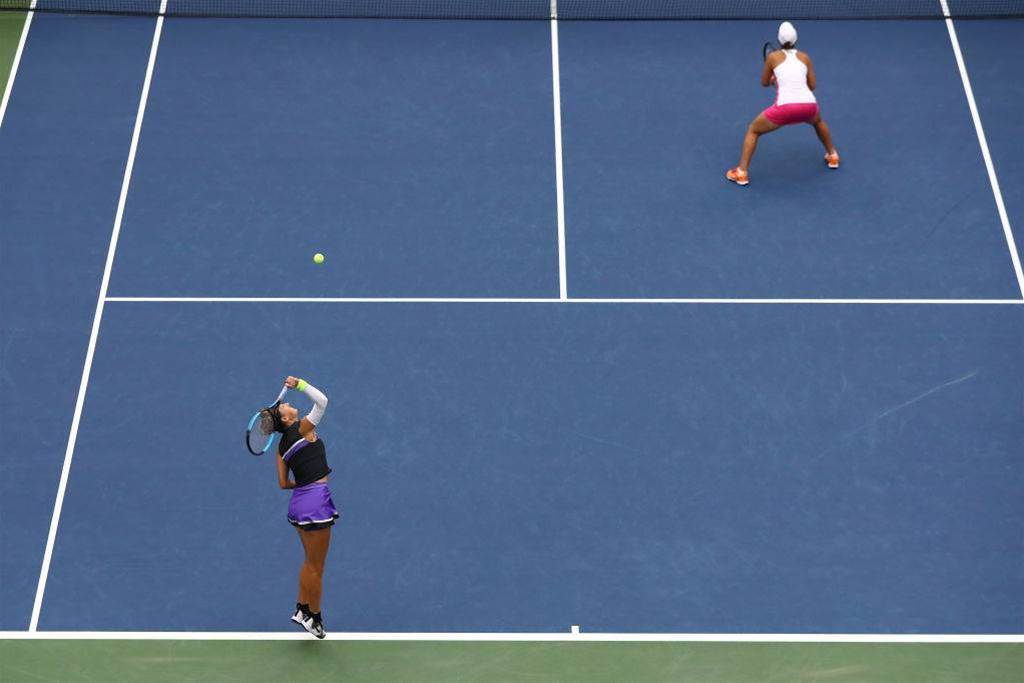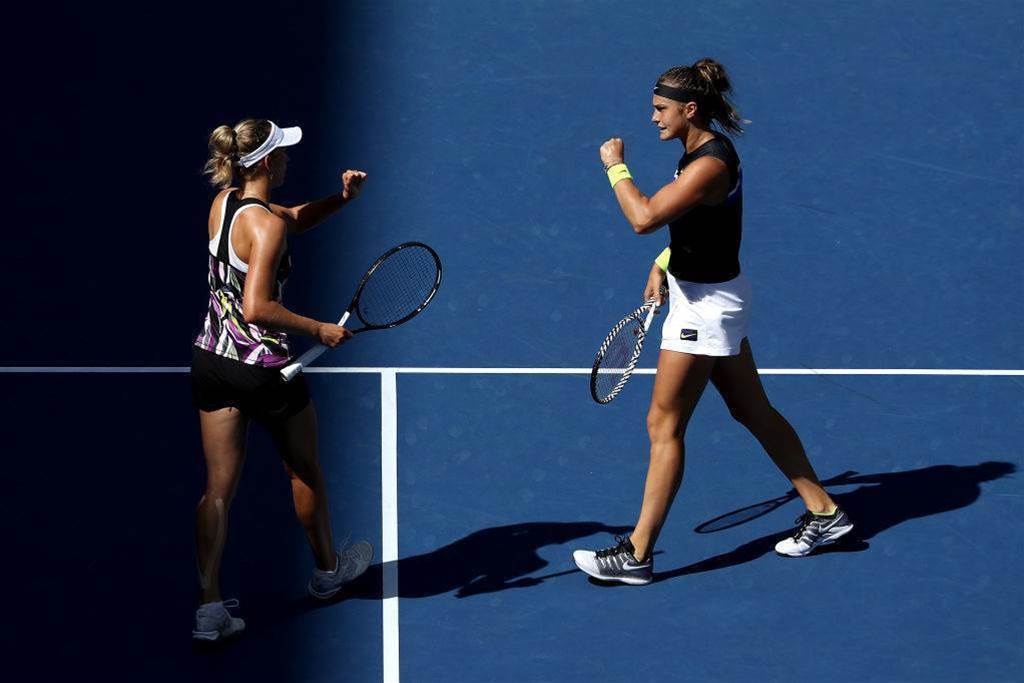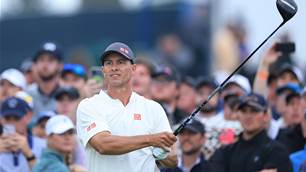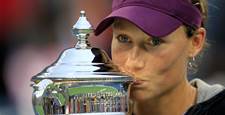We said it at the beginning! At least one Aussie woman was going to make a US Open final, but it sure wasn't going to be in singles.
Ash Barty got one step closer than compatriot Sam Stosur in the mixed doubles to edge into her second straight US Open women's doubles final and her seventh Grand Slam final overall.
Not too shabby for a 23-year-old who took a year off to play WBBL, but we digress.
Barty and her hard-hitting, high shrieking Belarusian partner Victoria Azarenka (not too shabby herself with two Grand Slam singles titles and three doubles runner-ups) are now experiencing the culmination of what has realistically been a long time coming.
The two compliment each other perfectly. Barty has a natural aptitude for doubles, carved out from the first time she could hold a racket and drilled into her by long-time doubles partner and mentor, Casey Dellacqua.
Like most Aussies, she has phenomenal ability at the net, but she compliments this doubles-heavy skillset with a solid all-round game.
She has the ability to disguise shots, recover positions and unsettle her opponents with effective slices before blasting them off the court with ripping forehands.
It's all wrapped up in a neat 166 centimetre package with an exceptional sense of positional awareness. But where Barty lacks: experience, coolness under pressure, rapid mobility and balance, fiery competitiveness and consistent power...well, that's where Azarenka comes in.

It's an almost-certainty that had Azarenka not endured the barren injury run and off-field issues, coming either side of a hiatus for the birth of her son, Leo, that the Belarusian would be coming into this partnership with the far-bigger Grand Slam haul.
As an incredible-junior turned superstar of the female game for nearly a decade, everyone knows Azarenka's excellent individual attributes, but she has a keen mind for doubles and is a two-time Grand Slam champion in the mixed variety.
Together they make a formidable and naturally complimentary partnership and have been notably improving in virtually every tournament they've played.
They've had a clear run of tournaments together now with little break inbetween. Part of the reason Barty slumped out of the US Open singles so easily was the titanic three-setter she had played only a day previously with Azarenka to make it to the fourth round.
While many doubles partners suffer from uneven prioirties, Barty has always given doubles and her parnters - no matter the difference in skill or career momentum - the upmost respect and dilligence. For her part, Azarenka clearly respects Barty as well.
But while everything may seem rosy on their side of the net, in their upcoming US Open doubles final they face a different task to what they've encountered so far.
Elise Mertens and Aryna Sabalenka are two of the fastest-rising powers in women's tennis. While the 'Bartyzenka' duo (doesn't work, does it?) have faced a myriad of challenges to make it to the final, they're yet to face a power, prodigious duo like this.
The two are unique in their ability to balance highly successful doubles and singles careers simultaneously at such a young age. In a sentence, they're the new breed of women's tennis: powerful and versatile in equal measure.
Mertens has already established herself as the premier doubles player, at number four in the world with a hard-hitting baseline strategy that, on her day, simply blasts volleyers off the court.
She made the semi-final at the Australian Open last year in her singles breakthrough tournament and while this year she's had more success on the doubles court, her reliability and serve are her only real question-marks.

The amount of power she generates off the baseline is world class.
Azarenka's countrywoman, Sabalenka, is hardy any different, renowned for her whopping groundstrokes. Currently ranked 14th in the world in doubles, she hasn't had the same scope of doubles success as Mertens who can already boast a French Open semi-final this year.
But she is arguably the superior singles player already at only 21-years-old, ranked in the top ten and with a series of pedigreed wins highlighting her as one of the fastest up and comers in the women's game. She also helped guide Belarus to the final of the 2017 Fed Cup.
They missed out on this year's final to you know who.
While Sabalenka's serve more than makes up for Mertens' weaknesses, her own achilles heel is her youthful exuberance. Expect 40 winners and 39 unforced errors, each as entertaining as the last.
The general consensus is if Sabalenka can mature in her decision-making, Belarus will have discovered their next Azarenka before the progenitor is even finished. An interesting dynamic between the two, to say the least.
Together they have overpowered a relatively easy draw to make it to this stage, easily accounting for a string of opponents that, while honestly you'd expect them to beat, have proven giant-killers in their own right.
But here's where it gets really interesting.
Women's doubles is increasingly random in the draws it throws out and this final is the perfect example of that. The growing versatility among women's tennis players at the elite level lends itself to eradicating the doubles specialist. Crossovers are now queen.
As if to illustrate the point, Barty was arguably one of the few pure doubles champions in the world and she just won the French Open singles.
Meanwhile, the most dedicated doubles partnership in the US Open draw, China's Duan Yingying and Zheng Saisai were trounced in straight sets by 'Mertelenka' (now it's just getting offensive) in the quarters.
Like Barty and Azarenka, Sabalenka and Mertens evidence this shift across tennis. They've forged a decent doubles career together and made the quarter-finals at Wimbledon, but have also had to forego tournaments due to their singles commitments.
Yet their combination of resolute power and individual skill has won out. They don't compliment each other as fluently as Barty and Azarenka, but they almost don't need to.
Whoever you support (c'mon Barty) and whatever happens in their final Monday morning AEST, it will certainly be an intiguing watch; a blueprint for the evolution of the women's game.
Oh, and it's just going to bloody excellent tennis. Did we mention hard-hitting?
Related Articles

100 not out: Scott's consolation after US Open crash

Spaun drains monster putt for unlikely US Open triumph













